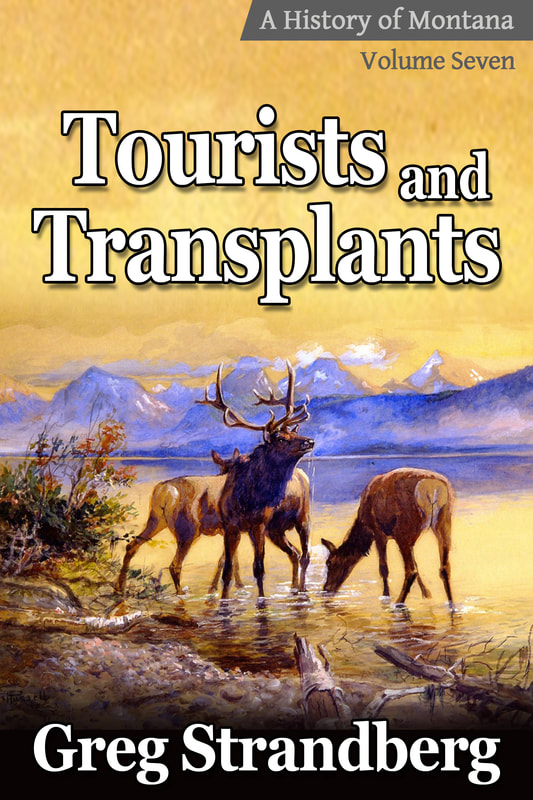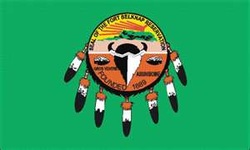 Fort Belknap Indian Reservation Flag
Fort Belknap Indian Reservation Flag These signs involved them moving their hands over their bellies to show that they were robust eaters, in the Atsina’s case, and that they tattooed their chests, in the case of the Hidatsa. The Hidatsa were the tribe that remained near the Missouri River, while the Atsina chose the Great Plains. And it was the Atsina that would come to settle in Montana.
Early History
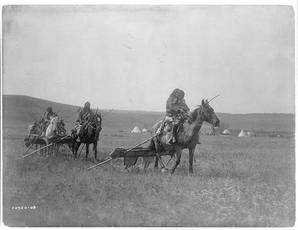 Gros Ventre with travois, c. 1900
Gros Ventre with travois, c. 1900 A split occurred with the Arapaho around 1700, and the Gros Ventre headed west. They adopted the same customs and nomadic lifestyle that all the Plains Indians would come to be known for, including rigorous hunting of the buffalo, often from horseback, and a pronounced wanderlust. It was also during this time that they had their first encounter with Europeans.
To Montana
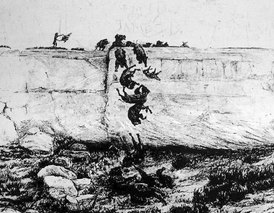 Depiction of a buffalo jump
Depiction of a buffalo jump And as is so common throughout the Indian Tribes’ history, this bullied group went ahead and bullied another, this time the Shoshone, Flathead, Kootenai, and Pend d’Oreille tribes, who moved further west across the Continental Divide, and in the case of the Shoshone, south out of the state.
First Peoples Buffalo Jump State Park
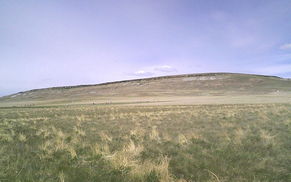 First Peoples Buffalo Jump cliff face
First Peoples Buffalo Jump cliff face Arrowheads and a spearhead that have been carbon dated suggest that the site was used as early as 5,000 years ago. Still, it’s widely agreed that the buffalo jump wasn’t really made a regular feature of the Plains Indians’ way of life until around 900.
The Indians who got their meals from the site would simply take the meat right off the animals and eat it on the spot. Fire pits changed all that beginning around 500, and “blood kettles,” which were shallow bowls dug into the earth. These were then used to boil the bison blood, making it last longer without risk of spoilage. The cooked blood was then often used to make high-protein biscuits.
The First Peoples Buffalo Jump was used frequently and extensively as time went on, as the debris left behind attests. The bone bed at the site extends all along the face of the cliff and measures 13 feet deep, and archaeologists estimate that it would have taken 6,000 buffalo to create it.
That all changed when the horses came to the Great Plains tribes around 1700, and the site eventually became just another relic of Montana’s past.
Notes
Bryan, William L. Montana’s Indians: Yesterday and Today. American & World Geographic Publishing: Helena, 1996. p 30-2.
Walden, Carl. Encyclopedia of Native American Tribes. Infobase Publishing: New York, 2006. p 98.
Learn More about the Gros Ventre
http://stateparks.mt.gov/first-peoples-buffalo-jump/
State of Montana Gros Ventre Information
http://tribalnations.mt.gov/fortbelknap.asp

